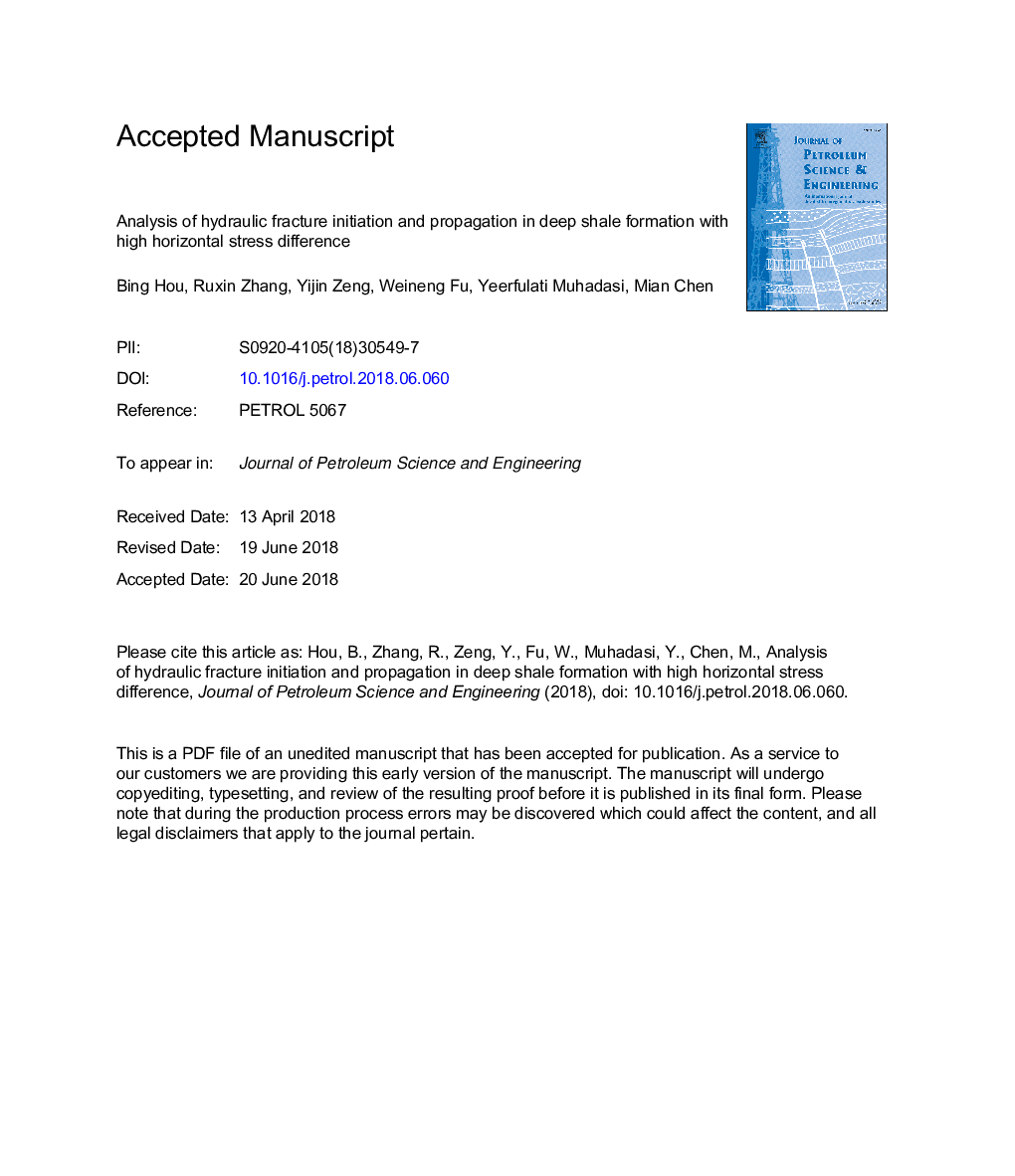| کد مقاله | کد نشریه | سال انتشار | مقاله انگلیسی | نسخه تمام متن |
|---|---|---|---|---|
| 8124437 | 1522771 | 2018 | 33 صفحه PDF | دانلود رایگان |
عنوان انگلیسی مقاله ISI
Analysis of hydraulic fracture initiation and propagation in deep shale formation with high horizontal stress difference
ترجمه فارسی عنوان
تجزیه و تحلیل شروع و انتشار شکست هیدرولیک در شکل گیری شیل عمیق با اختلاف شدت افقی بالا
دانلود مقاله + سفارش ترجمه
دانلود مقاله ISI انگلیسی
رایگان برای ایرانیان
کلمات کلیدی
موضوعات مرتبط
مهندسی و علوم پایه
علوم زمین و سیارات
زمین شناسی اقتصادی
چکیده انگلیسی
Deeply buried shale formations (vertical depthâ¯>â¯3500â¯m) that are rich in shale gas are abundant in south China. The primary problems in the exploitation of these formations are the relatively small stimulated reservoir volume (SRV) and low production rates in comparison with their shallower counterparts. These issues are attributed to the high fracturing pressure, limited fracture extension because of sand plugging, significant horizontal stress contrast, and discontinuities produced during hydraulic fracturing. To accurately evaluate and improve the SRV in deep shale formations, the mechanism of fracture propagation must be understood and described. In this regard, a series of large-scale true tri-axial experiments with acoustic emission (AE) monitoring were conducted to characterize the fracture initiation and propagation in a selected deep shale formation. It was found that the difficulty in the complex fracture network formation was because the high stress contrast controls the fracture propagation path to generate large main fractures instead of activating discontinuities. The hydraulic fractures initiated either from open-hole positions or stress concentration locations on a wellbore wall that displayed two types of intersection in terms of crossing and deflection. In general, four types of fracture morphologies were identified: transverse fracture, transverse fracture with bedding planes, natural fracture with bedding planes, and transverse fracture with bedding planes and natural fractures. In addition, the horizontal stress contrast, fluid viscosity, pump rate and fracturing procedure on fracture propagation were evaluated for their effect on the resulting SRV. A low-viscosity fluid can activate discontinuities to form a complex fracture network, whereas a high-viscosity fluid is likely to produce large fractures under a high contrast in the horizontal stresses. On the basis of the above-mentioned analyses, a fracturing procedure applying a periodically varying pump rate and shut-in using a low-viscosity fluid was suggested to be an effective approach to enhance the interaction between the hydraulic fractures and discontinuities as well as to increase the fracture length.
ناشر
Database: Elsevier - ScienceDirect (ساینس دایرکت)
Journal: Journal of Petroleum Science and Engineering - Volume 170, November 2018, Pages 231-243
Journal: Journal of Petroleum Science and Engineering - Volume 170, November 2018, Pages 231-243
نویسندگان
Bing Hou, Ruxin Zhang, Yijin Zeng, Weineng Fu, Yeerfulati Muhadasi, Mian Chen,
